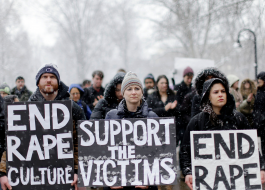
Higher education takes on new meaning in Pueblo County, Colorado.
In February, local officials announced that a first-of-its-kind scholarship program will create $475,000 in funding to help send the county's graduating high school seniors to local colleges. A majority of the fund — about $425,000 — came from taxing legal marijuana.
"A couple years ago, these are dollars that would have been going to the black market, drug cartels," Pueblo County commissioner Sal Pace told KKTV in an interview. "Now money that's used to fund drug cartels is now being used to fund college scholarships."
Marijuana has been legal for recreational use in Colorado since 2012. Pueblo County, located about an hour's drive south of resort town Colorado Springs, began collecting a 2% excise tax on all weed grown there in 2016. The tax will increase 1% annually until 2021.
Students who live in Pueblo County and graduate from high school this spring automatically qualify for a chunk of the fund. County officials expect a $1,000 payout for every applicant, which they can put toward tuition at Pueblo Community College or Colorado State University-Pueblo (which gets about 300 and 400 incoming freshmen from the county every year).
While $1,000 would not stretch far at a private university, in-state tuition costs about $3,000 a year at PCC and up to $6,000 annually at CSU-Pueblo, depending on the number of credit hours taken. The Pueblo County Scholarship could put a substantial dent in student debt.
The scholarship fund is expected to grow as the rate of taxation increases. Pace told The Huffington Post that only half of the marijuana cultivators licensed to grow were operational last year, and the county expects to generate extra revenue as more farms come online in 2017.
Colorado isn't the only state to put legal marijuana revenues to good use.
In California, which legalized recreational marijuana in 2016 but won't sell it in stores until 2018, residents will pay a 15% tax on sales of the drug, generating up to $1 billion in new tax revenue annually. Ten million dollars (increasing annually for five years until it reaches $50 million) will help support communities disproportionately harmed by the war on drugs.




